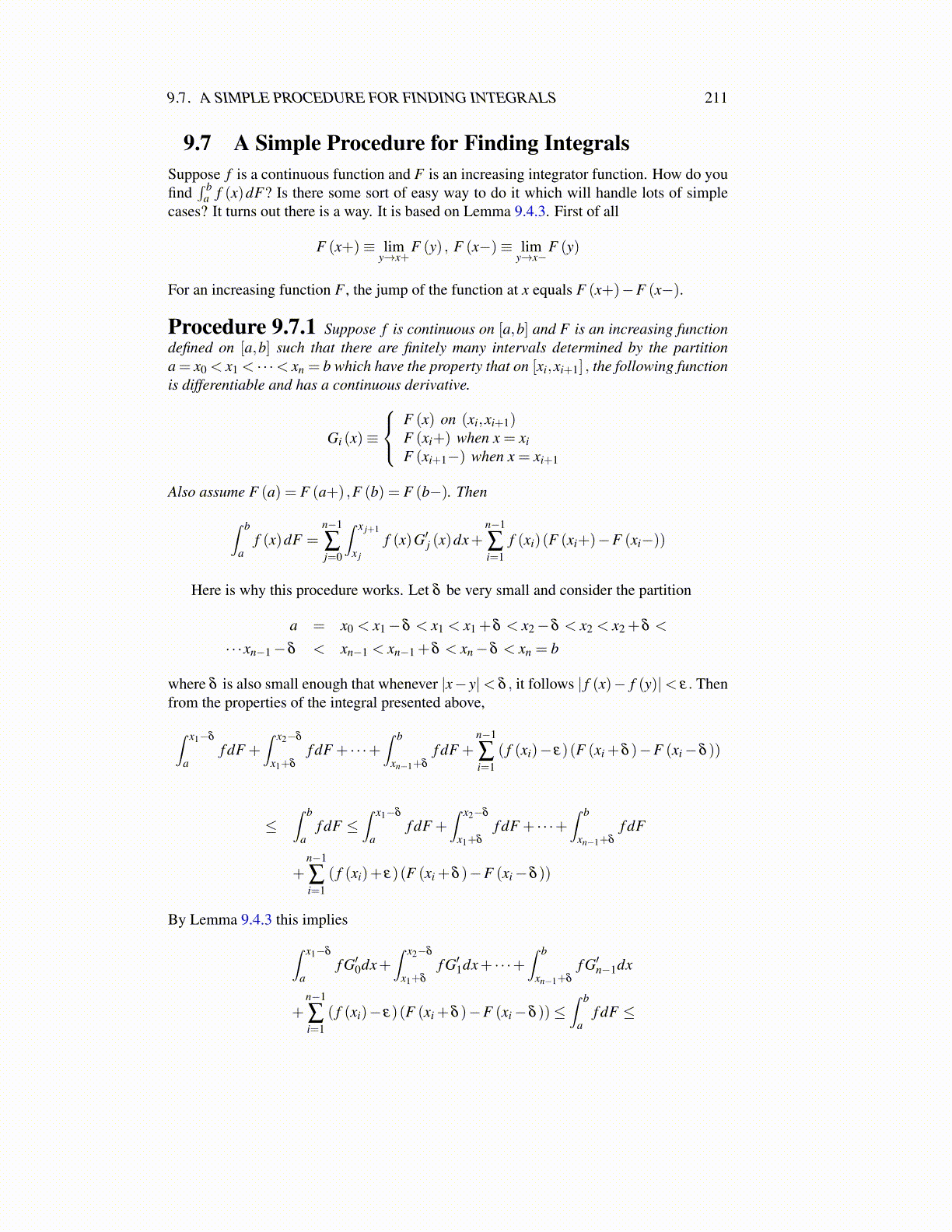
9.8. STIRLING’S FORMULA 211
=12
n−1
∑k=1
(ln(
k+12
)− ln(k)
)− 1
2
n−1
∑k=1
(ln(k+1)− ln
(k+
12
))
≤ 12
n−1
∑k=1
(ln(k)− ln
(k− 1
2
))− 1
2
n−1
∑k=1
(ln(k+1)− ln
(k+
12
))
=12
n−1
∑k=1
(ln(k)− ln
(k− 1
2
))− 1
2
n
∑k=2
(ln(k)− ln
(k− 1
2
))
=12
ln2−(
12
ln(n)− ln(
n− 12
))≤ ln2
2
(∫ n+1
1ln(t)dt−Tn+1
)−(∫ n
1ln(t)dt−Tn
)=
∫ n+1
nln(t)dt−
(12(ln(n)+ ln(n+1))
)≥ 0
Thus {∫ n
1 ln(t)dt−Tn} increases to some α ≤ ln22 . Compute the integral and then conclude
that (n lnn−n)−Tn → α . and so taking the exponential, nn
enn!n−1/2 → eα This has provedthe following lemma.
Lemma 9.8.2 limn→∞n!en
nn+1/2 = c for some positive number c.
In many applications, the above is enough. However, the constant can be found. Thereare various ways to show that this constant c equals
√2π . The version given here also
includes a formula which is interesting for its own sake.Using integration by parts, it follows that whenever n is a positive integer larger than 1,
∫π/2
0sinn (x)dx =
n−1n
∫π/2
0sinn−2 (x)dx (9.10)
Lemma 9.8.3 For m≥ 1,∫π/2
0sin2m (x)dx =
(2m−1)(2m−3) · · ·12m(2m−2) · · ·2
π
2,∫
π/2
0sin2m+1 (x)dx =
(2m)(2m−2) · · ·2(2m+1)(2m−1) · · ·3
.
Proof: Consider the first formula in the case where m = 1. From beginning calculus,∫ π/20 sin2 (x)dx = π
4 = 12
π
2 so the formula holds in this case. Suppose it holds for m. Thenfrom the above reduction identity and induction,
∫π/2
0sin2m+2 (x)dx =
2m+12(m+1)
∫π/2
0sin2m (x)dx =
2m+12(m+1)
(2m−1) · · ·12m(2m−2) · · ·2
π
2.
The second claim is proved similarly.